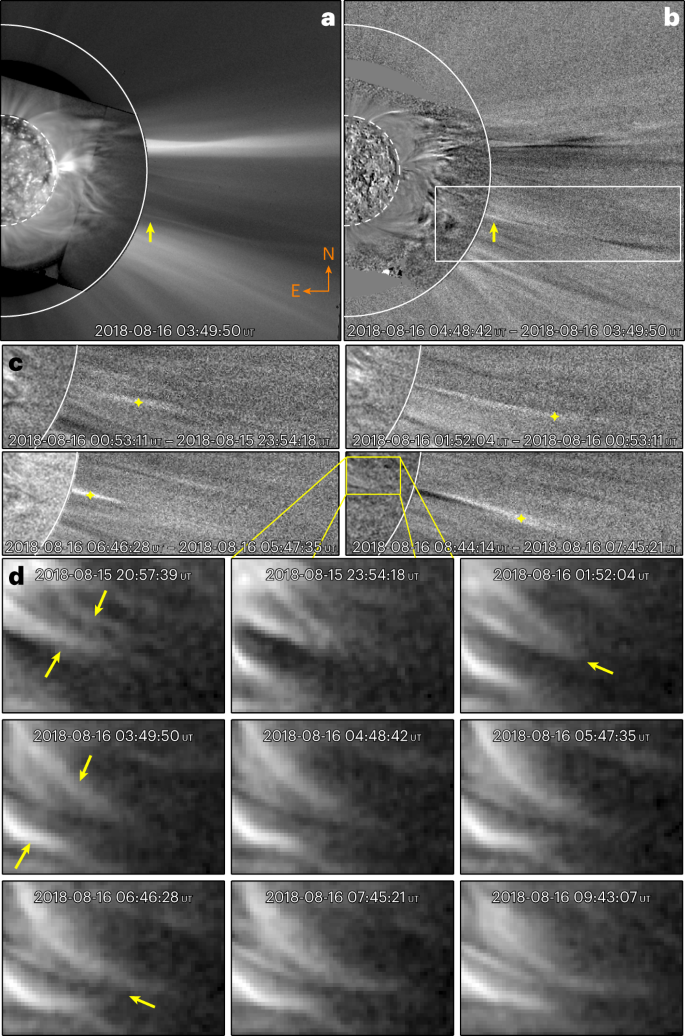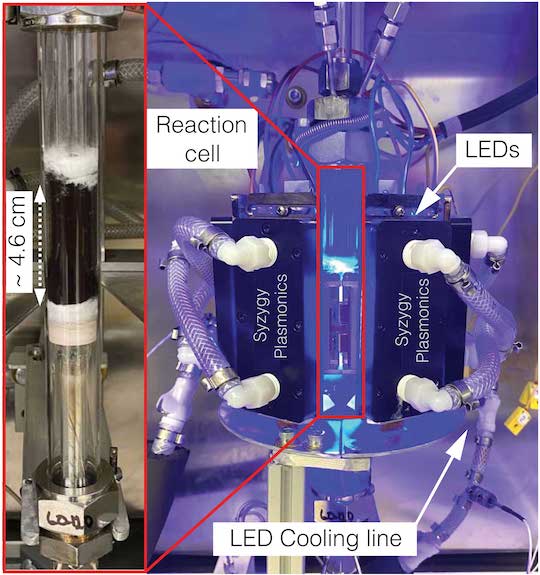太陽風がどのような仕組みで吹いているのか、研究者らが重要な手がかりを発見 Researchers discover an important clue as to what mechanism drives the solar wind
2022-11-24 マックス・プランク研究所
GOESのデータでは、赤道付近の2つのコロナホールが、磁場の強い領域に近接し、太陽風が妨げられることなく太陽から遠ざかっていることがわかり、このような系同士の相互作用が、遅い太陽風の起点になる可能性があると考えられている。この領域の上空では、GOESのデータから、中コロナに半径方向外側に向いた細長いプラズマ構造が見えている。今回初めて直接撮影されたこの現象を、著者らは「コロナウェブ」と呼んでいる。コロナウェブは常に動いており、その構造は相互に作用し、再編成されている。
科学者たちは、コロナの外側にあるジェット状の流れを、そこで宇宙への旅を始める遅い太陽風の構造だと解釈している。今回の研究で、この構造がすでに中間のコロナにも存在していることが明らかになった。
この現象をよりよく理解するために、研究者たちは他の宇宙探査機のデータも分析した。NASAの太陽観測衛星SDOは太陽表面の同時観測を行い、2006年から地球と一緒に太陽の周りを回っている探査機STEREO-Aは太陽側面からの観測を行っている。
太陽のリモートセンシング観測を取り入れた最新の計算技術を用いれば、スーパーコンピュータを使って、太陽コロナにあるとらえどころのない磁場のリアルな3次元モデルを構築することができる。今回、研究チームは先進的な磁気流体力学(MHD)モデルを用いて、この時期のコロナの磁場とプラズマの状態をシミュレートした。
この計算が示すように、コロナウェブの構造は磁力線に沿ったものである。研究者たちの解析は、中間コロナの磁場の構造が低速の太陽風に刻印され、粒子を宇宙へ加速するのに重要な役割を果たすことを示唆している。研究チームの新しい結果によると、中間コロナの高温の太陽プラズマは、コロナウェブの開いた磁力線に沿って流れている。磁力線が交差して相互作用するところでは、エネルギーが放出される。
<関連情報>
- https://www.mpg.de/19552630/1123-aero-catching-the-sun-s-dynamic-coronal-web-151060-x
- https://www.nature.com/articles/s41550-022-01834-5
高度に構造化された低速太陽風を駆動する複雑なコロナウェブの直接観測 Direct observations of a complex coronal web driving highly structured slow solar wind
L. P. Chitta,D. B. Seaton,C. Downs,C. E. DeForest & A. K. Higginson
Nature Astronomy Published:24 November 2022
DOI:https://doi.org/10.1038/s41550-022-01834-5

Abstract
The solar wind consists of continuous streams of charged particles that escape into the heliosphere from the Sun, and is split into fast and slow components, with the fast wind emerging from the interiors of coronal holes. Near the ecliptic plane, the fast wind from low-latitude coronal holes is interspersed with a highly structured slow solar wind, the source regions and drivers of which are poorly understood. Here we report extreme-ultraviolet observations that reveal a spatially complex web of magnetized plasma structures that persistently interact and reconnect in the middle corona. Coronagraphic white-light images show concurrent emergence of slow wind streams over these coronal web structures. With advanced global magnetohydrodynamics coronal models, we demonstrate that the observed coronal web is a direct imprint of the magnetic separatrix web (S-web). By revealing a highly dynamic portion of the S-web, our observations open a window into important middle-coronal processes that appear to play a key role in driving the structured slow solar wind.



